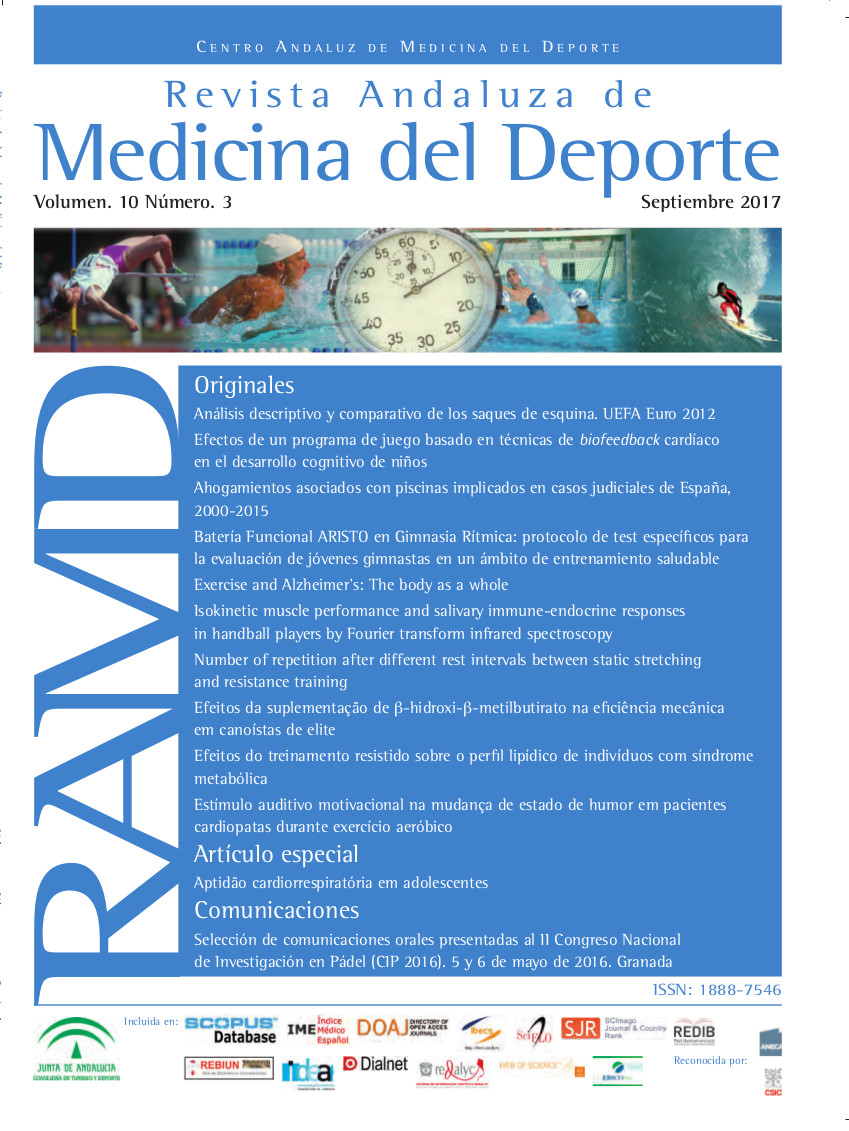Effects of resistance training on the lipid profile of subjects with metabolic syndrome
Abstract
Objective
To investigate the effects of resistance training on the lipid profile of Metabolic Syndrome patients.
Method
Ten sedentary subjects (52.88 ± 10.9 years) with Metabolic Syndrome completed a resistance training protocol with a total duration of 15 weeks, three times per week. Before and after the resistance training, anthropometric parameters, such body mass, body mass index, abdominal, waist and hip circumferences, percentage of body fat and muscle mass content were analyzed. Furthermore, the maximal oxygen uptake was estimated and biochemical parameters, such as total cholesterol, triglycerides, high‐density lipoprotein, low‐density lipoprotein, glycemia and urea were analyzed.
Results
The intervention didn’t statistically modified body mass, body mass index, circumferences of waist and hip, the percentage of total body fat, lean mass content, the biochemical levels of total cholesterol, triglycerides, low‐density lipoprotein and glucose. However, the resistance training provoked an increase in high‐density Lipoprotein levels and a significant decrease in abdominal circumference and urea concentration.
Conclusion
Higher concentrations of high‐density Lipoprotein and lower levels of urea as well as the reductions in abdominal circumference provoked by resistance training in this population are indicators of a lower cardiovascular risk, indicating that the resistance training may be beneficial.


